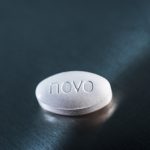
Consuming omega-3 fatty acids like flaxseed oil and walnuts may help slow the decline in physical function related to amyotrophic lateral sclerosis (ALS), new research suggests. ALS (formerly known as Lou Gehrig’s disease) is a progressive neurodegenerative disease that affects nerve cells in the brain and spinal cord. People with ALS lose the ability to initiate and control muscle movement over time. The average life span after diagnosis is two to five years. A slower decline in symptoms may also slightly extend survival for people with ALS, the researchers noted. The new study findings were published online June 21 in the journal Neurology. “The link our study found between diet and ALS is intriguing and suggests, but does not prove, that people with ALS may benefit from incorporating more omega-3 fatty acids into their diet,” said Dr. Kjetil Bjornevik, an assistant professor of epidemiology and nutrition at Harvard T.H. Chan School of Public Health, in Boston. “It will now be important to conduct additional research looking specifically at the plant-based omega-3 fatty acid alpha-linolenic acid in people with ALS to further explore this possibility,” Bjornevik said in a journal news release. Besides flaxseed oil and walnuts, good sources of omega-3 fatty acids include canola oil and pumpkin seeds. Consuming more omega-6 fatty acid could also be beneficial, the investigators found. To study the link between… read on > read on >


















